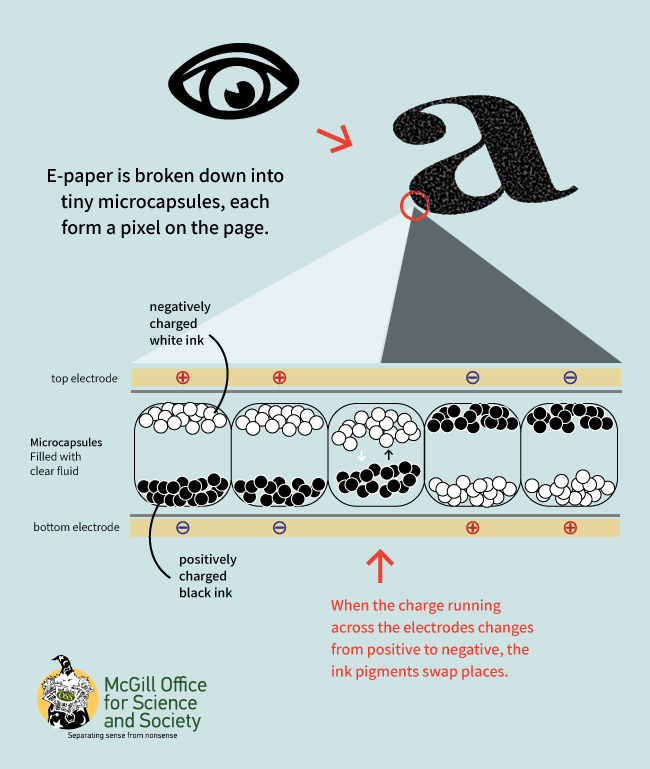Our days are dominated by screens: the morning news, ads on the metro, work documents at the office, the dozens of texts we send a day, and to top it off, a good TV show in the evening. But for a lot of people, novels are best enjoyed on paper. And that’s even after the invention of electronic book readers (e-readers like Kobo’s or Amazon’s Kindle), which can hold all the books in the world in a single lightweight device. But the “paperless book” has not even come close to replacing its print equivalents: sales of e-readers have pretty much plateaued over the past five years. Many people argue that it’s more difficult to read off of screens, that they prefer paper copies, especially for longer articles and novels. Is it possible then that paper is just better for us?
When it comes to liquid crystal display (LCD) screens, like your phone or laptop, researchers find varying results. Some research has shown that people pay less attention to text on a screen, that they tend to be more distracted. Others have shown that we blink less when reading off of computers. This causes our eyes to dry out faster and contributes to what all 9-5 office workers are well familiar with: visual fatigue. But these effects don’t usually translate to e-readers. Studies often find e-readers behave more or less like paper books. That’s because the most popular e-readers use a fundamentally different technology than what is found in your phone or laptop. They use e-paper or e-ink,a special kind of flexible display created to mimic printed paper.
Invented in the late 90’s by a group of MIT undergraduates, e-ink harnesses a common laboratory technique called electrophoresis. In other words, it uses electricity to move particles. The surface of e-paper is lined with thousands of tiny capsules, each containing black and white ink pigments. These are the exact same kind found in traditional printers, and are have either a positive or negative electrical charge. This allows each pigment to be switched ‘on’ or ‘off’ instantly by changing the electric current running through the surface of the paper. When a negative charge is applied, the positively charged black pigments rise above the white, and the pixel on the surface appears black. Thus everywhere on a page where a letter should appear, there is a negative charge. Everywhere else where the e-paper appears white, a positive charge is applied. You can think of e-paper like an electrically powered Etch A Sketch: instead of shaking the paper to change how it looks, a new charge is applied and the ink pigments move to reflect that.

Researchers believe that, since e-paper doesn’t emit any light of its own, just like regular paper, this might explain why e-ink is “better” for us than reading off laptops or tablets. For example, several studies have shown that exposure to artificial light from LCD devices in the evening can reduce your brain’s secretion of melatonin – the hormone that induces sleep. Thus screen use before bedtime is associated with more difficulty falling asleep and less time spent sleeping. E-readers however do not share this effect; in this case they behave just like paper.
So e-ink holds up pretty well when compared to its paper predecessor, and yet there’s nothing quite like cracking open a new book: that faint musty smell, crisp unturned pages, perfect unbent spine. Scientists speculate this is because reading is not just a visual activity, but involves wider cognitive processes including memory, emotion, and other sensory information. Take for example the physicality of a novel: your progress through a story is matched by your physical process through a book, the right side shrinks as the left side grows. You can physically feel your position in a book. Although e-readers offer progress bars as a symbolic indication of your place, many readers feel it’s not quite the same. Since books themselves are not just lines of text, they carry emotional significance and a sense of ownership which e-readers do not. Don’t expect e-books to be replacing the real deal anytime soon.
Want to engage with this content? View it here on our Facebook page!







